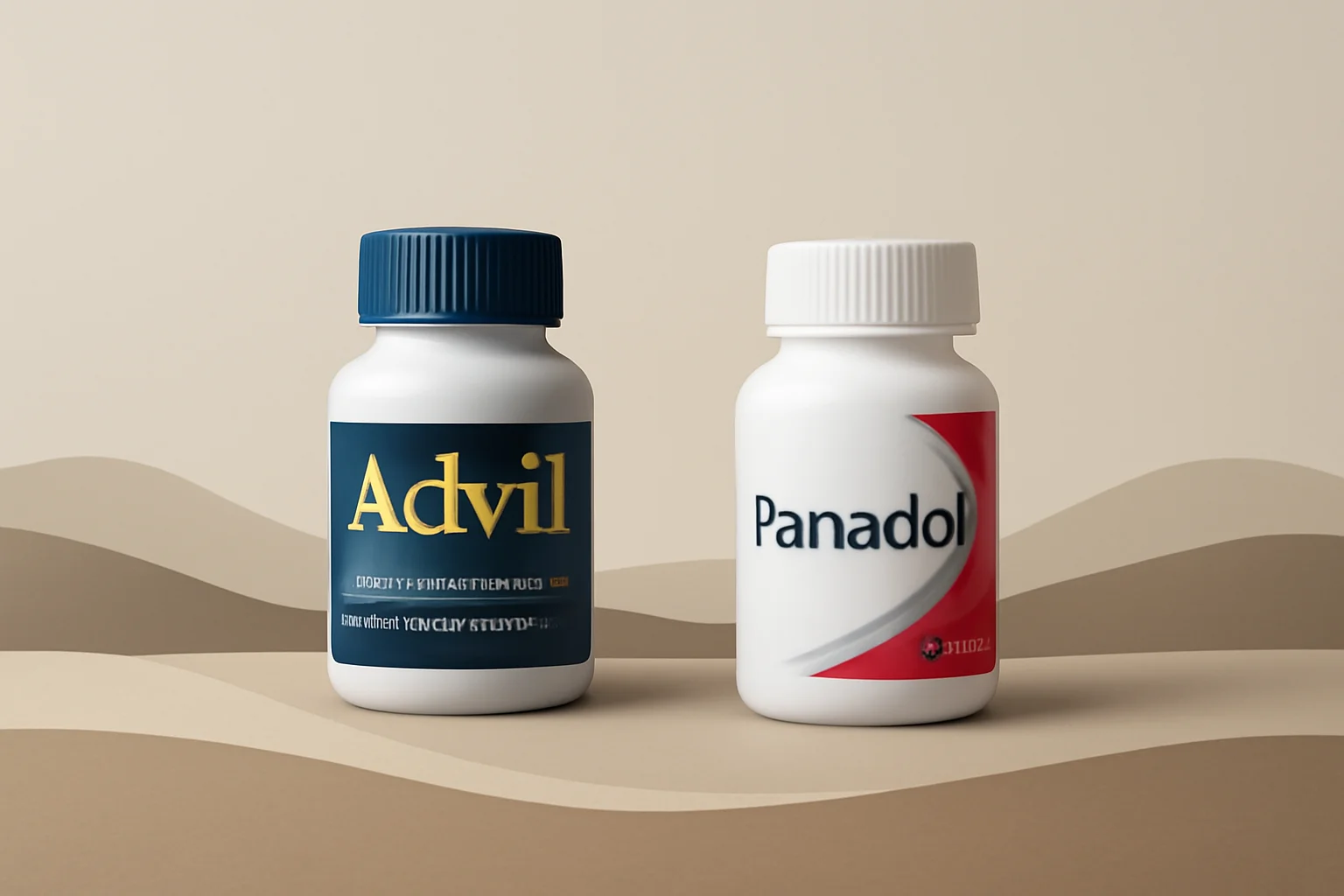
Advil or Panadol: Which is the Better Pain Reliever?
In the world of pain relievers, choosing the right option is not always a straightforward task, as there are numerous products available on the market that have different mechanisms of action and areas of application. Two popular pain relievers, Advil and Panadol, are often mentioned, but many people are unsure which is the right choice for treating various types of pain. People generally seek the best option, whether it’s for headaches, muscle pain, or fever, and being informed about the advantages and disadvantages of different medications is crucial for making an informed decision. Understanding the mechanisms of action, side effects, and important information regarding the use of pain relievers can help us choose the most appropriate product, considering our individual needs and health conditions.
Advil’s Mechanism of Action and Use
Advil, which contains ibuprofen as its active ingredient, is a non-steroidal anti-inflammatory drug (NSAID). The mechanism of action of ibuprofen lies in its ability to inhibit the production of prostaglandins, which are responsible for the sensation of pain and inflammation. During the use of this medication, the perception of pain decreases, and the level of inflammation is reduced.
Advil is suitable for treating various types of pain, such as headaches, migraines, muscle pain, joint pain, menstrual cramps, and fever. The medication is quickly absorbed in the body, so its effects are usually felt relatively soon.
It is important to mention that when using Advil, one must also consider potential side effects. These may include gastrointestinal complaints, such as heartburn or nausea, but in rarer cases, more severe side effects can occur. Therefore, it is advisable to seek medical advice before taking Advil, especially if someone has pre-existing health issues.
The duration of Advil use is also an important consideration. In the case of long-term use, it is essential to adhere to the dosages and durations recommended by a specialist to minimize the risk of side effects. Advil is not recommended during pregnancy and breastfeeding, so in these cases, other pain relievers may be considered.
Panadol’s Mechanism of Action and Use
Panadol, which contains paracetamol as its active ingredient, is also a popular pain reliever, but its mechanism of action differs from that of Advil. Paracetamol primarily acts on the central nervous system and inhibits the production of prostaglandins responsible for pain perception. Therefore, Panadol effectively alleviates pain and reduces fever; however, its anti-inflammatory effects are not significant, making it not always the best choice for pain of inflammatory origin.
The use of Panadol is widespread, as it effectively alleviates headaches, toothaches, muscle pain, and fever. It is particularly favored among children and pregnant women, as it is generally well tolerated and has fewer side effects than NSAIDs. However, it is important to pay attention to the maximum daily dose while taking Panadol, as overdose can cause liver damage.
One of the advantages of taking Panadol is that it is available in almost every pharmacy and comes in various forms, such as tablets, syrup, or effervescent tablets. Panadol usually acts quickly, but its effects may be delayed, as the absorption of the medication can be slower than that of ibuprofen.
It is important to note that Panadol is not suitable for treating inflammatory diseases, so if someone has pain of inflammatory origin, it is advisable to choose another pain reliever, such as Advil.
Comparison: Advil vs. Panadol
When comparing Advil and Panadol, several factors must be considered. One of the most important factors is the type and location of the pain. While Advil is an effective anti-inflammatory and is well-suited for joint pain, muscle pain, and inflammatory conditions, Panadol is more recommended for fever and non-inflammatory pain.
In terms of side effects, Advil may more frequently cause gastrointestinal issues, while taking Panadol generally results in fewer side effects, but the risk of overdose should not be overlooked. The use of Panadol is considered particularly safe for pregnant women and children, while the use of Advil is not recommended in these cases.
Regarding dosage, Advil is generally used in higher doses than Panadol. It is essential to emphasize that both medications should be taken according to the recommended dosages, and the maximum allowable amount should not be exceeded.
Finally, when making a choice, it is important to consider individual health conditions, existing diseases, and previously experienced side effects. Medical advice is always recommended before choosing any pain reliever.
This article does not constitute medical advice, and in case of health issues, everyone should follow their doctor’s recommendations.

